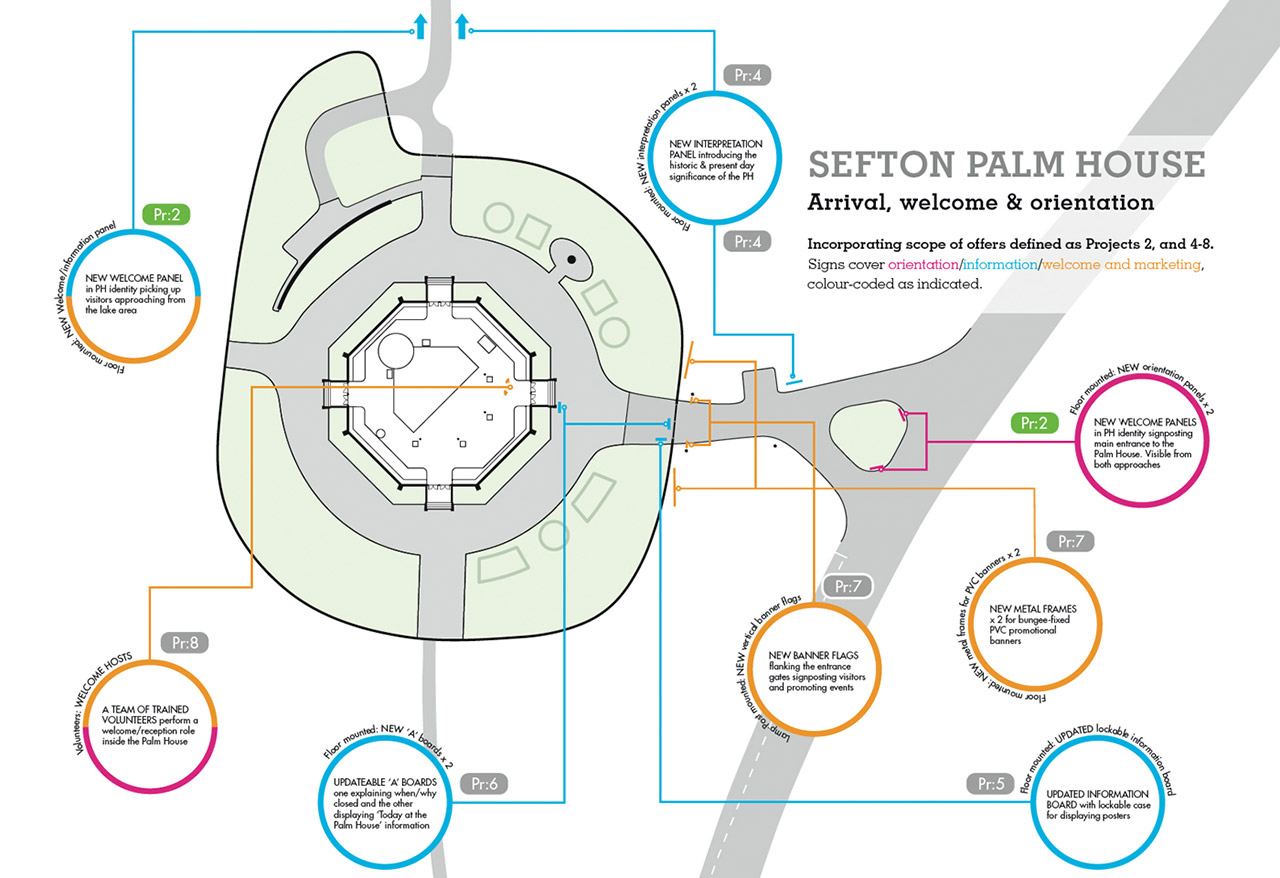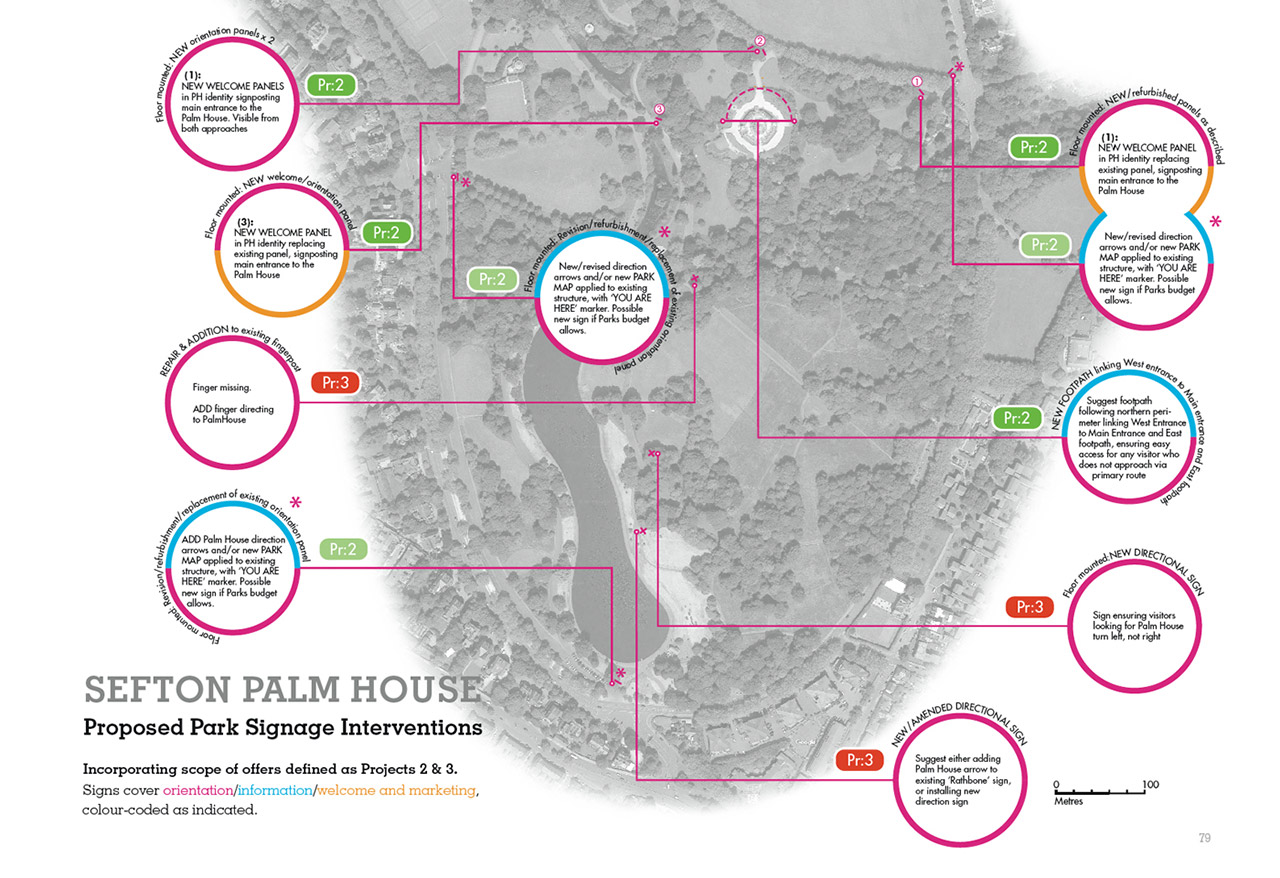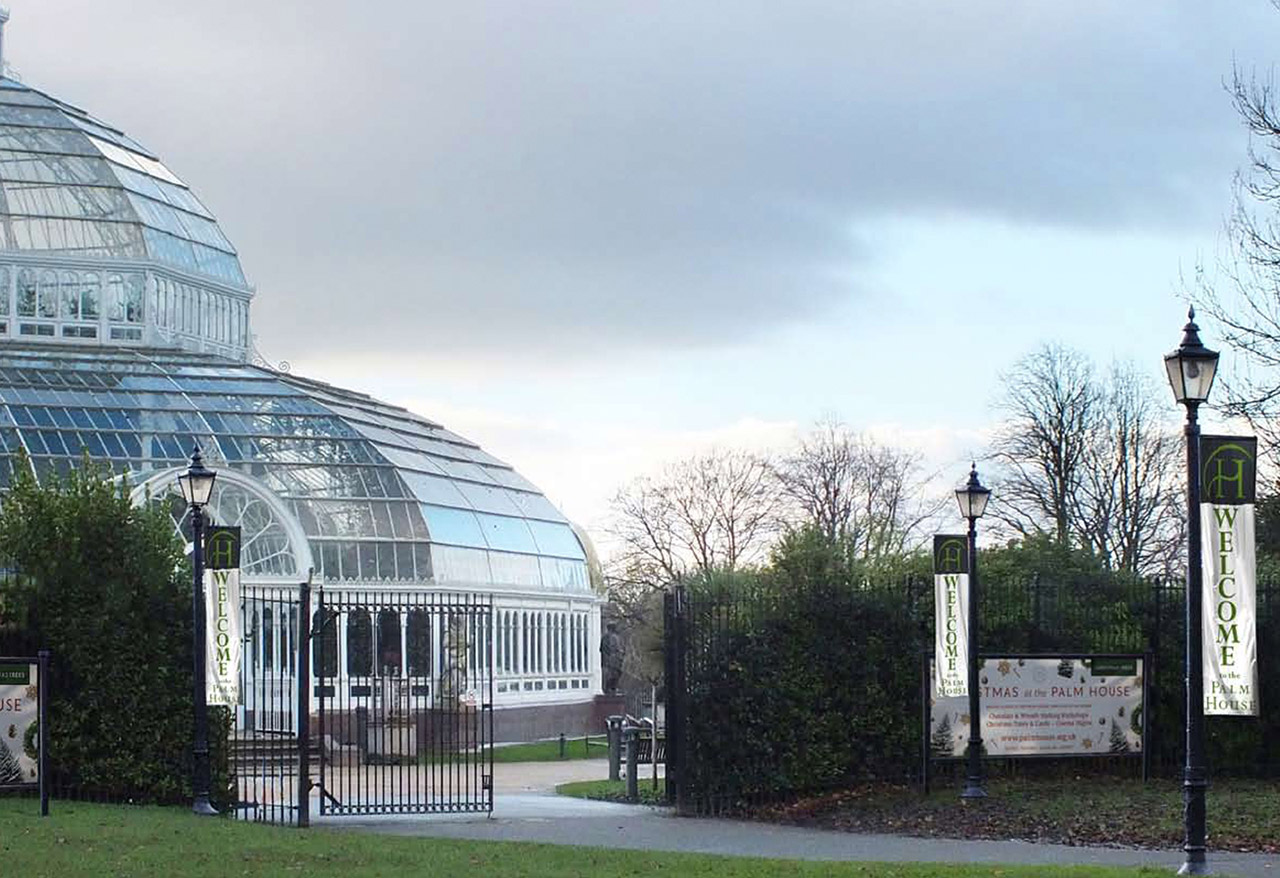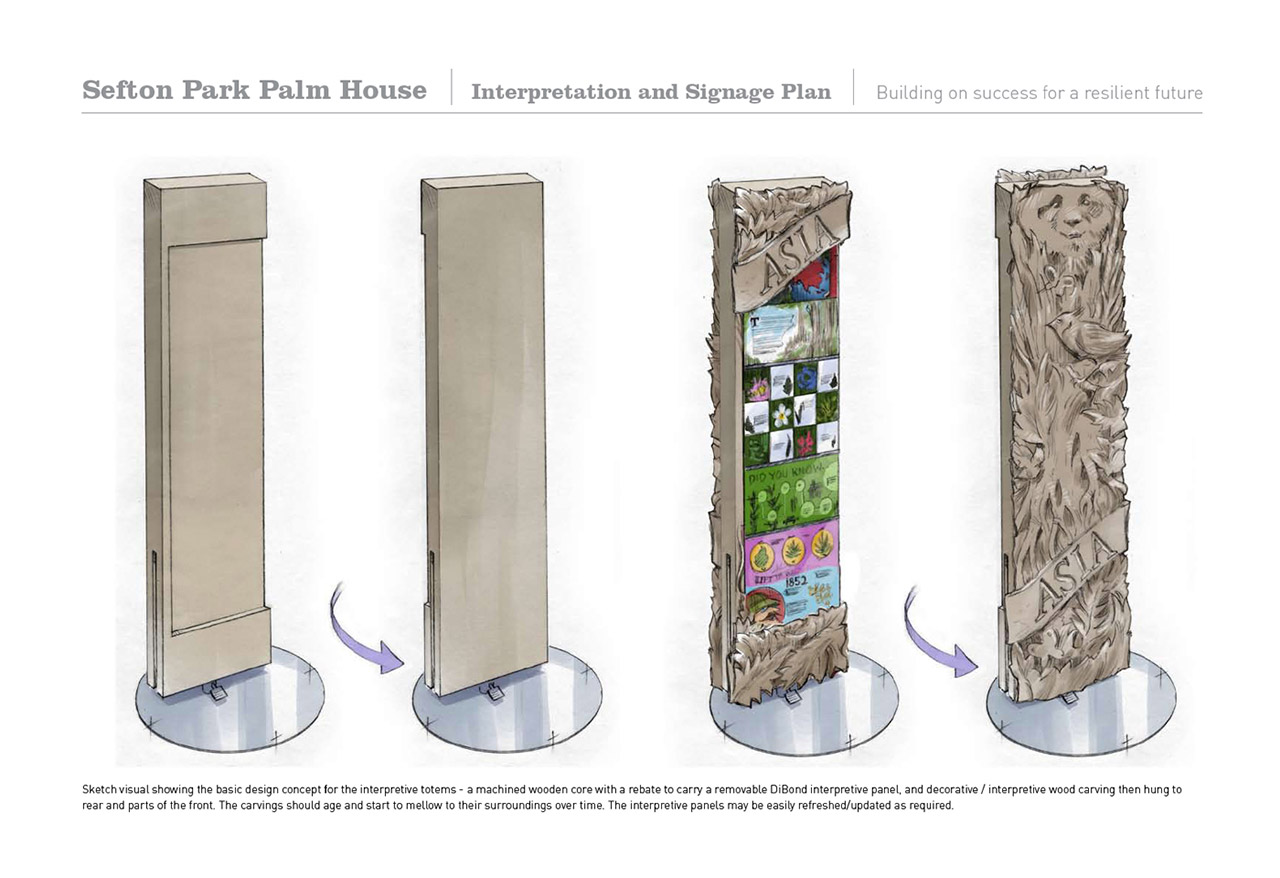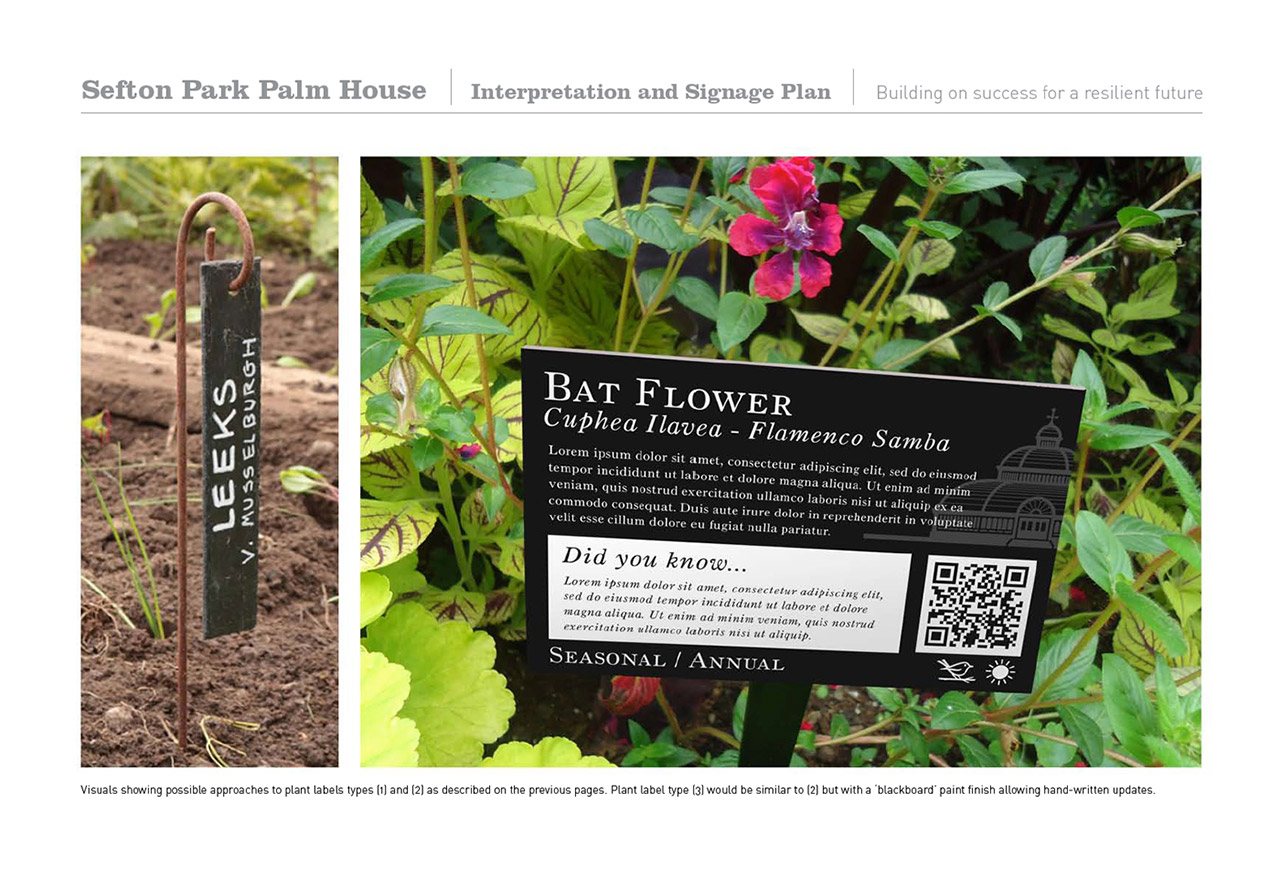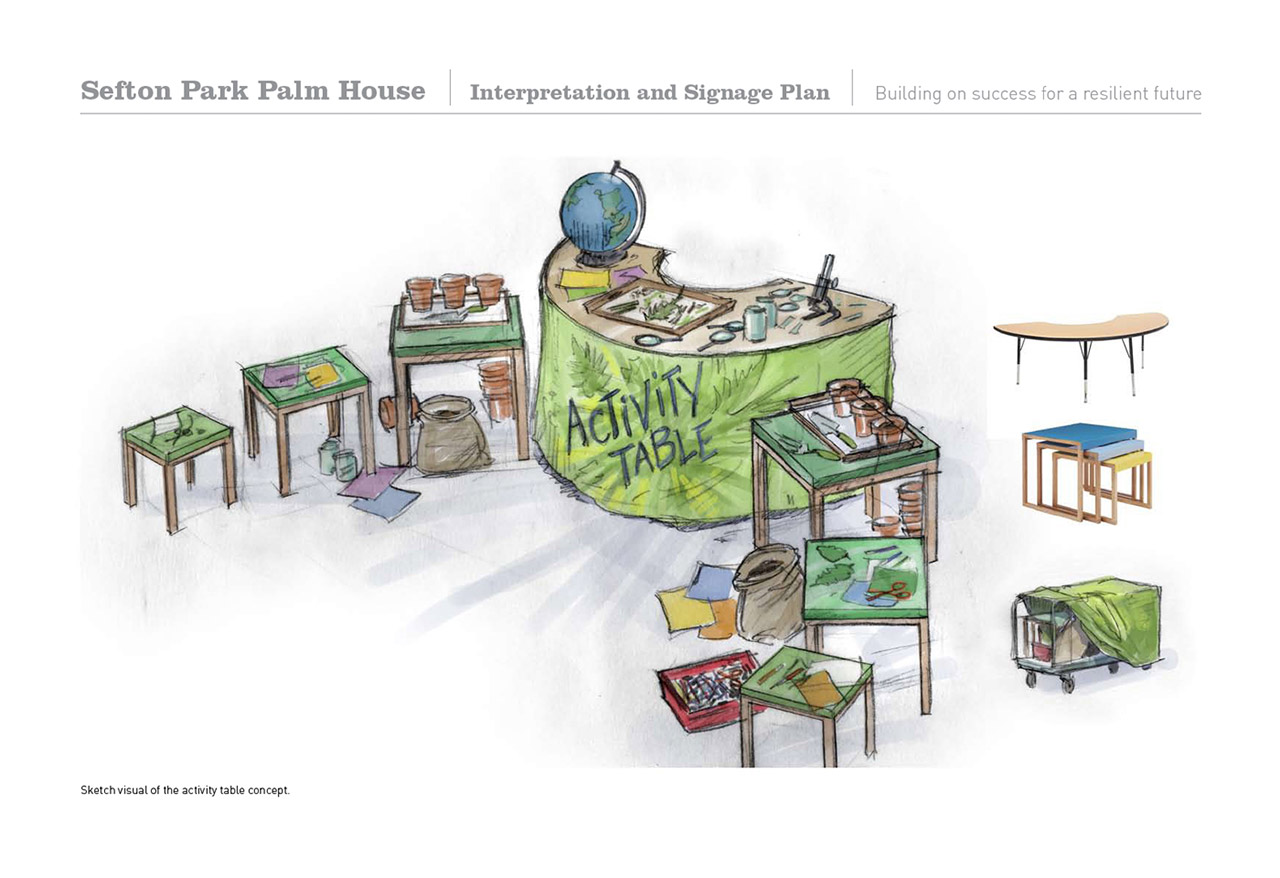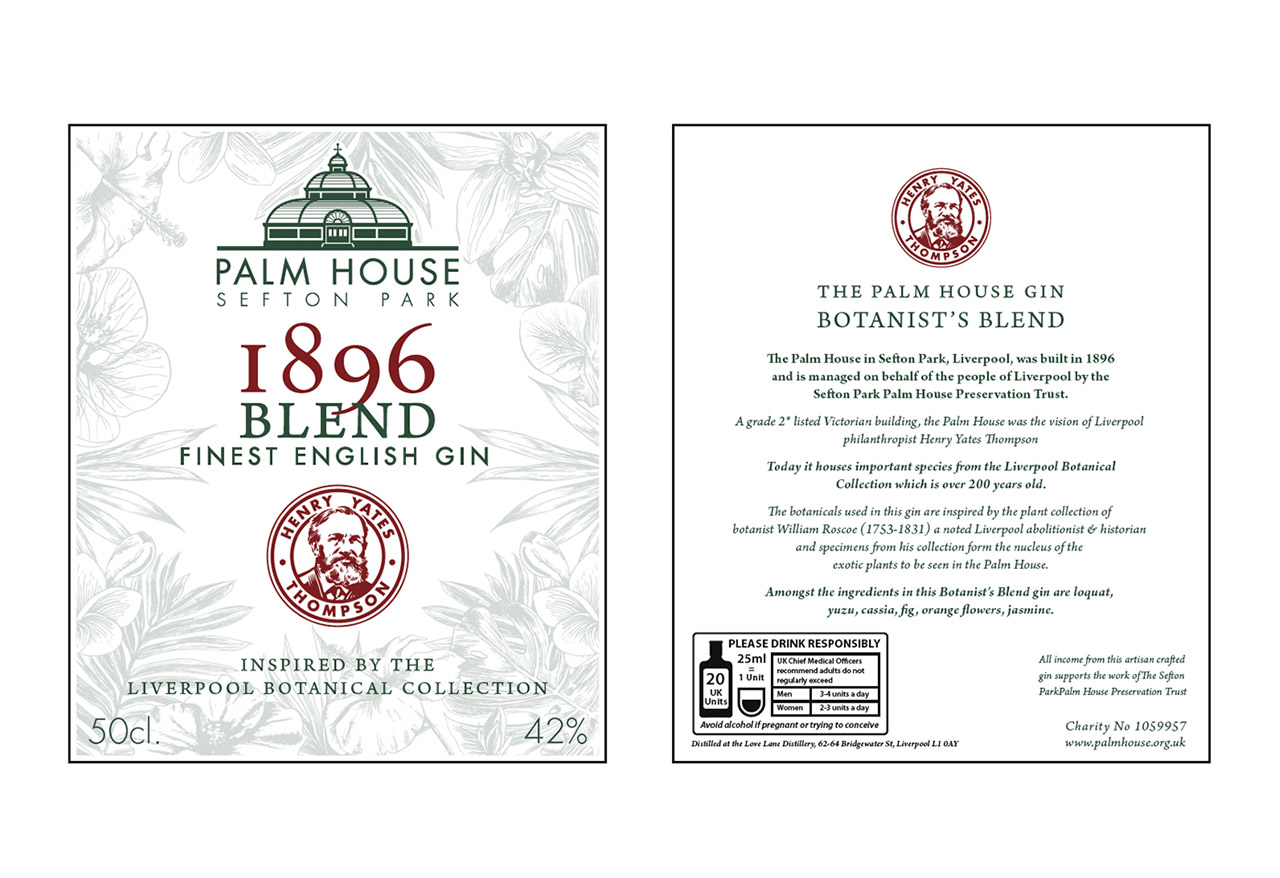Sefton Park Palm House, Liverpool
Developing a signage and interpretation scheme for this magnificent, Victorian structure of glass and iron
To develop a strategy for signage within and outside the Palm House to improve the sense of arrival for visitors as well as make recommendation for improved interpretation of the botanic collection and the history of the Palm House.
ROY BOARDMAN
(Director – Sefton Park Palm House)
Sefton Park Palm House is much beloved by the people of Liverpool. In the 1980s, following years of neglect and under-funding, the Palm House was closed – deemed unsafe for the visiting public. The state of disrepair worsened over the following decade until a student fixed a hand painted sign to the old gates with a simple message – ‘Save Me’. The community came together, funds were raised, and in the 1990s the Palm House was restored to its former glory. Today it is owned by the Liverpool City Council but managed by ‘Sefton Park Palm House Preservation Trust’ – a registered charity which employs a small number of full and part time staff to run the venue.
Our response to the tender request was a joint venture between ourselves and interpretive consultant and creative writer Carol Parr. At first reading the brief seems straightforward enough, but it is the constraints found in the detail which made this project an intriguing and exciting challenge. The signage within the park directing visitors to the Palm House was old and tired, with no cohesive branding or design principles. Developing a strategy to improve this was relatively straightforward, although consent of the Council would be required as the park itself belonged to them. Inside the Palm House was where the challenge really began. The Palm House is open to visitors, and additionally it runs a number of group events for local societies and groups. However, it is also a very popular venue for weddings and conferences, with much of its income coming from hire and event management fees. The clear challenge from an interpretive point of view is that the needs of the visitor are quite different to the needs of a wedding party or business conference. The visitor requires interpretation of the botanical collection and heritage of the site, whereas most weddings do not want interpretive panels or banners in the background of their photographs! Such is the clear distinction between its role as a heritage site and its role as a venue. The original brief specified ‘demountable panels’, but it became clear following a site visit that there was nowhere for storage when they were not required. Weddings are a regular occurrence at the Palm House, so any demountable structures would need to be very straightforward to dis-assemble and re-assemble, and must also be sufficiently robust to withstand this repeatedly. We felt that the lack of storage and other issues listed precluded this as a possible solution, so another way must be found.
Ultimately, our final ‘Interpretation and Signage Plan’ comprised 179 pages detailing twenty two separate, fully costed offers across all requested areas. These include:
-
Development of a new Palm House logotype, with suggested stylebook
-
Detailed plans for entrance/welcome/waymarking signage
-
Detailed plans for outdoor and indoor interpretation signage
-
Rotating totems – our design concept for the interpretation within the Palm House. The totems have an interpretation panel on one side and decorative wood carving on the other, which displays flora and fauna relating to the world regions of the botanical collection. When the venue is hired for an event, the totems are simply turned through 180 degrees to hide the interpretation panel and display the decorative carving
-
A detailed plant labelling system
-
Browsing Books – one detailing the heritage of the site and another being a guide to the botanical collection. These have since been commissioned and are in use
-
De-mountable activity table – guided craft activities and games for visiting families and school groups. All items can be demounted to a covered trolley when not in use and stored in an unused doorway
-
Palm House in a Box – an activity box for loan to schools, societies and care homes, to include archive images, press cuttings, handling objects, tools etc.

